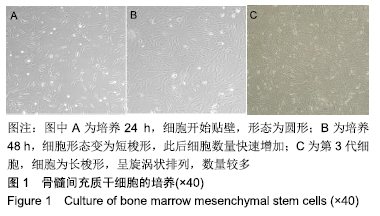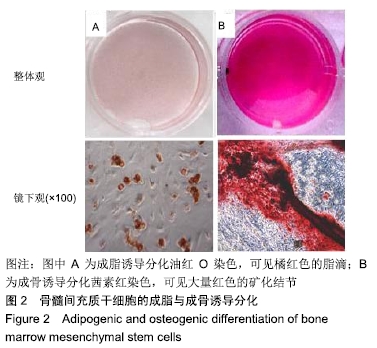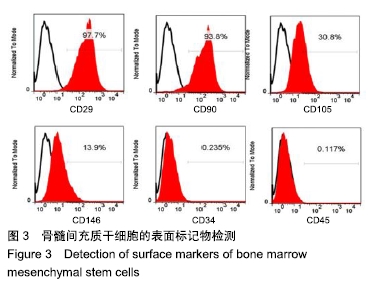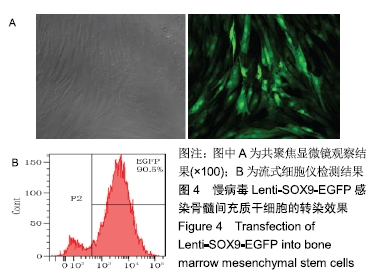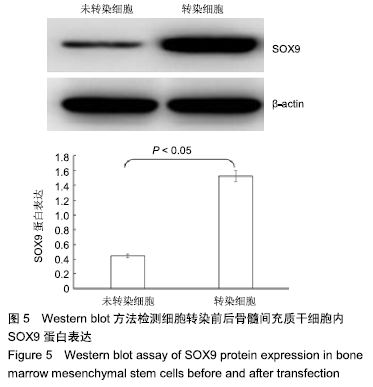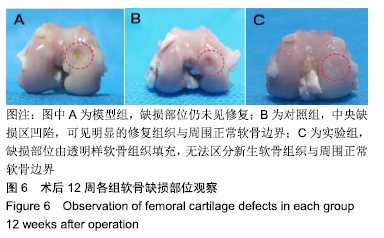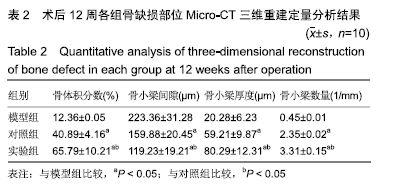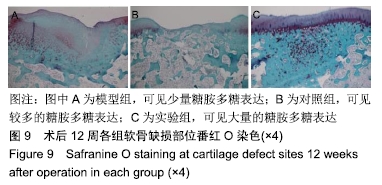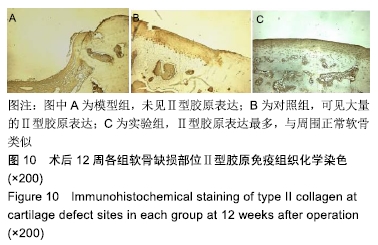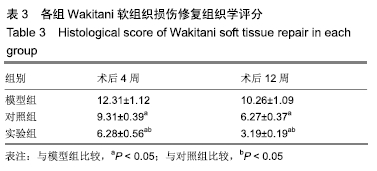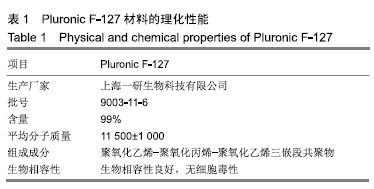中国组织工程研究 ›› 2020, Vol. 24 ›› Issue (16): 2506-2512.doi: 10.3969/j.issn.2095-4344.2254
• 组织工程骨及软骨材料 tissue-engineered bone and cartilage materials • 上一篇 下一篇
两种可注射Pluronic F-127水凝胶复合物修复兔软骨缺损的效果差异
樊薰勤,张明勇,戴 能,王喆敏,刘 拴
- 武汉科技大学附属天佑医院骨科,湖北省武汉市 430064
Differences in the effect of two injectable Pluronic F-127 hydrogel composites in repairing rabbit cartilage defects
Fan Xunqin, Zhang Mingyong, Dai Neng, Wang Zhemin, Liu Shuan
- Department of Orthopedics, Tianyou Hospital Affiliated to Wuhan University of Science and Technology, Wuhan 430064, Hubei Province, China
摘要:
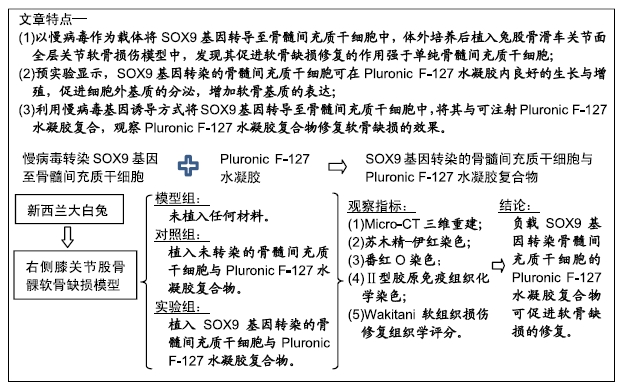
文题释义:
Pluronic F-127:是一种聚氧化乙烯-聚氧化丙烯-聚氧化乙烯三嵌段共聚物,具有在低温下为液态、常温下为固态的特性,为温固化水凝胶,具有良好的生物相容性与生物可降解性。作为组织工程中的细胞支架,Pluronic F-127已被广泛应用于软骨与皮肤等的构建。
SOX9基因:在性别决定与分化过程中具有重要的作用,在胚胎发育过程中参与骨的形成,同时其也参与神经系统与胰腺的发育及肿瘤的发生。在骨骼形成过程中,SOX9通过与 DNA 特定区域结合促进间充质细胞的聚集:首先是在软骨前体细胞中,随后是在分化中的或成熟的前体细胞中表达,维持软骨细胞增殖,抑制其向肥大软骨细胞分化,因此SOX9在软骨形成过程中起着十分重要的作用。
背景:预实验显示,SOX9基因转染的骨髓间充质干细胞可在Pluronic F-127水凝胶内良好的生长与增殖,促进细胞外基质的分泌,增加软骨基质的表达。
目的:利用慢病毒基因诱导方式将SOX9基因转导至骨髓间充质干细胞中,将其与可注射Pluronic F-127水凝胶复合,观察Pluronic F-127水凝胶复合物修复软骨缺损的效果。
方法:利用慢病毒基因诱导方式将SOX9基因转导至骨髓间充质干细胞中,转染48 h后与Pluronic F-127水凝胶复合。取60只新西兰大白兔(武汉科技大学实验动物中心提供),建立右侧膝关节股骨髁软骨缺损模型,随机分3组处理:模型组缺损部位未植入任何材料,对照组植入未转染的骨髓间充质干细胞与Pluronic F-127水凝胶复合物,实验组植入SOX9基因转染的骨髓间充质干细胞与Pluronic F-127水凝胶复合物。术后4,12周取缺损部位组织,分别进行Micro-CT三维重建、苏木精-伊红染色、番红O染色、Ⅱ型胶原免疫组织化学染色与Wakitani软组织损伤修复组织学评分。实验获得武汉科技大学伦理委员会批准。
结果与结论:①术后12周Micro-CT三维重建显示,模型组缺损区域未见明显的修复,中央仍有较大的凹陷;对照组可见明显的修复,中央凹陷区域明显减小,可见较多的再生骨小梁结构;实验组缺损部位基本完成修复;②术后12周苏木精-伊红染色显示,模型组缺损区仍未见骨小梁结构,细胞分布紊乱,未见软骨陷窝;对照组可见较多的骨组织重建,缺损区域主要由软骨样组织与纤维组织填充;实验组骨组织重建较充分,缺损区域主要由软骨样细胞与软骨样细胞外基质填充,细胞呈柱状排列,与周围软骨相似;③术后12周番红O染色与Ⅱ型胶原免疫组织化学染色显示,模型组可见少量糖胺多糖表达,未见Ⅱ型胶原表达;对照组可见较多的糖胺多糖与Ⅱ型胶原表达,实验组糖胺多糖与Ⅱ型胶原表达最多;④实验组Wakitani软组织损伤修复组织学评分高于对照组与模型组(P < 0.05);⑤结果表明,负载SOX9基因转染骨髓间充质干细胞的Pluronic F-127水凝胶复合物可促进软骨缺损的修复。
ORCID: 0000-0002-9648-5297(樊薰勤)
中国组织工程研究杂志出版内容重点:生物材料;骨生物材料; 口腔生物材料; 纳米材料; 缓释材料; 材料相容性;组织工程
中图分类号:
